
Daniel Hudson Burnham, was an American architect and urban designer. A proponent of the Beaux-Arts movement, he may have been, "the most successful power broker the American architectural profession has ever produced."

The World's Columbian Exposition was a world's fair held in Chicago in 1893 to celebrate the 400th anniversary of Christopher Columbus' arrival in the New World in 1492. The centerpiece of the Fair, held in Jackson Park, was a large water pool representing the voyage Columbus took to the New World. Chicago had won the right to host the fair over several other cities, including New York City, Washington, D.C., and St. Louis. The exposition was an influential social and cultural event and had a profound effect on architecture, sanitation, the arts, Chicago's self-image, and American industrial optimism.

Louis Henry Sullivan was an American architect, and has been called a "father of skyscrapers" and "father of modernism". He was an influential architect of the Chicago School, a mentor to Frank Lloyd Wright, and an inspiration to the Chicago group of architects who have come to be known as the Prairie School. Along with Wright and Henry Hobson Richardson, Sullivan is one of "the recognized trinity of American architecture". The phrase "Form follows function" is attributed to him, although he credited the concept to ancient Roman architect Vitruvius. In 1944, Sullivan was the second architect to posthumously receive the AIA Gold Medal.
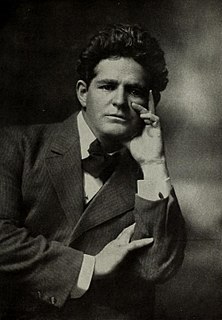
George Grey Barnard, often written George Gray Barnard, was an American sculptor who trained in Paris. He is especially noted for his heroic sized Struggle of the Two Natures in Man at the Metropolitan Museum of Art, his twin sculpture groups at the Pennsylvania State Capitol, and his Lincoln statue in Cincinnati, Ohio. His major works are largely symbolical in character. His personal collection of medieval architectural fragments became a core part of The Cloisters in New York City.

Daniel Chester French, was an American sculptor of the late nineteenth and early twentieth centuries, best known for his design of the monumental statue of Abraham Lincoln (1920) in the Lincoln Memorial, Washington, DC.

Dankmar Adler was a German-born American architect and civil engineer. He is best known for his fifteen-year partnership with Louis Sullivan, during which they designed influential skyscrapers that boldly addressed their steel skeleton through their exterior design: the Wainwright Building in St. Louis, Missouri (1891), the Chicago Stock Exchange Building (1894), and the Guaranty Building in Buffalo, New York (1896).

Modern architecture, or modernist architecture, was an architectural style based upon new and innovative technologies of construction, particularly the use of glass, steel, and reinforced concrete; the idea that form should follow function (functionalism); an embrace of minimalism; and a rejection of ornament. It emerged in the first half of the 20th century and became dominant after World War II until the 1980s, when it was gradually replaced as the principal style for institutional and corporate buildings by postmodern architecture.

The Exposition Internationale des Arts et Techniques dans la Vie Moderne was held from 25 May to 25 November 1937 in Paris, France. Both the Palais de Chaillot, housing the Musée de l'Homme, and the Palais de Tokyo, which houses the Musée d'Art Moderne de la Ville de Paris, were created for this exhibition that was officially sanctioned by the Bureau International des Expositions.

The Auditorium Building in Chicago is one of the best-known designs of Louis Sullivan and Dankmar Adler. Completed in 1889, the building is located at the northwest corner of South Michigan Avenue and Congress Street. The building was designed to be a multi-use complex, including offices, a theater, and a hotel. As a young apprentice, Frank Lloyd Wright worked on some of the interior design.
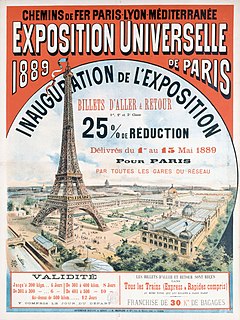
The Exposition Universelle of 1889 was a world's fair held in Paris, France, from 6 May to 31 October 1889. It was the fourth of eight expositions held in the city between 1855 and 1937. It attracted more than thirty-two million visitors. The most famous structure created for the Exposition, and still remaining, is the Eiffel Tower.

Karl Theodore Francis Bitter was an Austrian-born American sculptor best known for his architectural sculpture, memorials and residential work.

George Raymond Lawrence was a commercial photographer of northern Illinois. After years of experience building kites and balloons for aerial panoramic photography, Lawrence turned to aviation design in 1910.
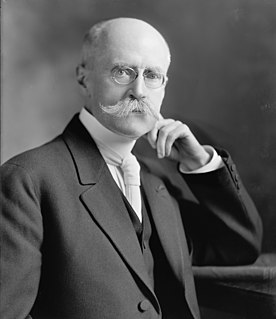
Edwin Howland Blashfield was an American painter and muralist, most known for painting the murals on the dome of the Library of Congress Main Reading Room in Washington, DC.

The Auditorium Theatre is a music and performance venue located inside the Auditorium Building at 50 Ida B. Wells Drive in Chicago, Illinois. Inspired by the Richardsonian Romanesque Style of architect Henry Hobson Richardson, the building was designed by Dankmar Adler and Louis Sullivan and completed in 1889. The Chicago Symphony Orchestra performed in the theatre until 1904 as well as the Chicago Grand Opera Company and its successors the Chicago Opera Association and Chicago Civic Opera until its relocation to the Civic Opera House in 1929. The theatre currently hosts performances by the Joffrey Ballet, in addition to a variety of concerts, musicals, performances and events. Since the 1940s, it has been owned by Roosevelt University and since the 1960s refurbished and managed by an independent non-profit arts organization.

The Palmer Mansion, constructed 1882–1885 at 1350 N. Lake Shore Drive, was once the largest private residence in Chicago, Illinois, located in the Near North Side neighborhood and facing Lake Michigan. It was designed by architects Henry Ives Cobb and Charles Sumner Frost of the firm Cobb and Frost and built for Bertha and Potter Palmer. Palmer was a prominent Chicago businessman who was responsible for much of the development of State Street. The construction of the Palmer Mansion on Lake Shore Drive established the "Gold Coast" neighborhood, still one of the most affluent neighborhoods in the city. The mansion was demolished in 1950.
Selim Hobart Peabody (1829–1903) was an American educator, born in Rockingham, Vermont. He graduated at the University of Vermont in 1852, during the following years held professorships of mathematics, physics, and engineering at several colleges, and from 1880 to 1891 was president of the University of Illinois. In 1893, he was chief of the department of liberal arts at the World's Columbian Exposition, in 1899–1900 editor and statistician of the United States Commission to the Paris Exposition, and in 1900 superintendent of the division of liberal arts at the Pan-American Exposition. From 1892 to 1895, he served as president of the Chicago Academy of Sciences and from 1889 to 1891 as president of the National Council of Education. Peabody was an associate editor of the International Cyclopædia, under Editor-in-Chief Harry Thurston Peck. Peabody's publications include:

Willoughby James Edbrooke (1843–1896) was an American architect and a bureaucrat who remained faithful to a Richardsonian Romanesque style into the era of Beaux-Arts architecture in the United States, supported by commissions from conservative federal and state governments that were spurred by his stint in 1891-92 as Supervising Architect of the U.S. Treasury Department.
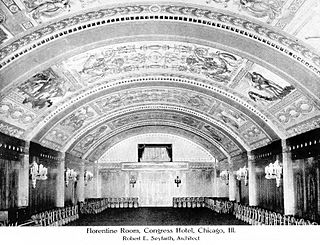
Robert Seyfarth was an American architect based in Chicago, Illinois. He spent the formative years of his professional career working for the noted Prairie School architect George Washington Maher. A member of the influential Chicago Architectural Club, Seyfarth was a product of the Chicago School of Architecture.

Alice De Wolf Kellogg was an American painter whose work was exhibited at the 1893 World's Columbian Exposition.
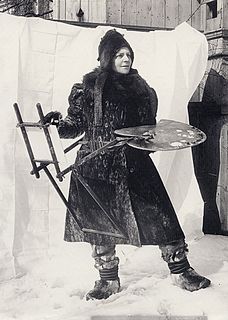
Anna Katarina Boberg, née Scholander, was a Swedish artist married to prominent architect Ferdinand Boberg. Anna Scholander was the daughter of architect Fredrik Wilhelm Scholander and the granddaughter of Axel Nyström. Boberg was a person of many artistic pursuits; initially she worked with ceramics and textiles and besides painting she also worked with set design and writing, for example. She was of an artistic family, but never received any formal training in the arts, and is considered an autodidact. Many of her paintings are of northern Norway, which became Boberg's main focus for many years after a trip there in 1901. These works were not received very well in Sweden, but did much better in Paris. Boberg spent a great deal of time in the area near Lofoten in Norway, where she eventually had a cabin, and she made many of those trips on her own.



















